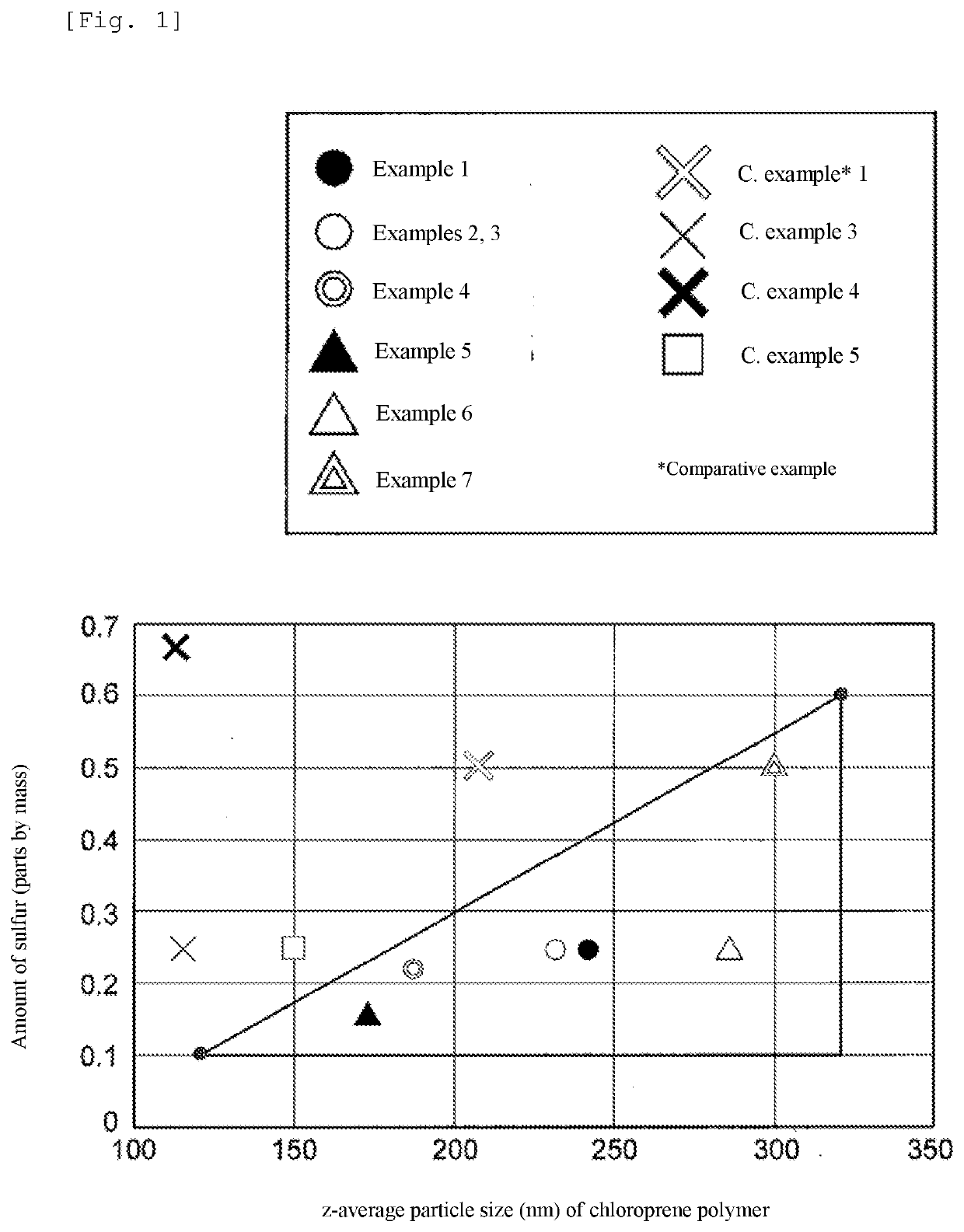Chloroprene polymer latex and method for producing same
- Summary
- Abstract
- Description
- Claims
- Application Information
AI Technical Summary
Benefits of technology
Problems solved by technology
Method used
Image
Examples
example 1
Production of Sulfur-Modified Chloroprene Polymer Latex
[0081]A reactor having an internal volume of 5 L was used, and 90.3 parts by mass of 2-chloro-1,3-butadiene (chloroprene) (produced by Tokyo Chemical Industry, Co., Ltd.) (A-1), 9.7 parts by mass of 2,3-dichloro-1,3-butadiene (produced by Tokyo Chemical Industry, Co., Ltd.) (A-2) and 87.3 parts by mass of pure water, 2.4 parts by mass of a rosin acid (Rosin HTR, produced by Arakawa Chemical Industries, Ltd.), 0.25 parts by mass of sulfur (B), 2.9 parts by mass of potassium hydroxide (guaranteed reagent, produced by Wako Junyaku K.K.), 1.4 parts by mass of sodium hydroxide (guaranteed reagent, produced by Wako Junyaku K.K.), 1.0 part by mass of a sodium salt of a β-naphthalene sulfonate formaldehyde condensate (produced by Kao Corporation), and 0.29×10−6 parts by mass of copper sulfate were fed into the reactor and were emulsified. After the rosin acid was converted into a rosin acid soap (mixture of potassium rosinate and sodium...
PUM
| Property | Measurement | Unit |
|---|---|---|
| Percent by mass | aaaaa | aaaaa |
| Percent by mass | aaaaa | aaaaa |
| Percent by mass | aaaaa | aaaaa |
Abstract
Description
Claims
Application Information
 Login to View More
Login to View More - R&D
- Intellectual Property
- Life Sciences
- Materials
- Tech Scout
- Unparalleled Data Quality
- Higher Quality Content
- 60% Fewer Hallucinations
Browse by: Latest US Patents, China's latest patents, Technical Efficacy Thesaurus, Application Domain, Technology Topic, Popular Technical Reports.
© 2025 PatSnap. All rights reserved.Legal|Privacy policy|Modern Slavery Act Transparency Statement|Sitemap|About US| Contact US: help@patsnap.com

